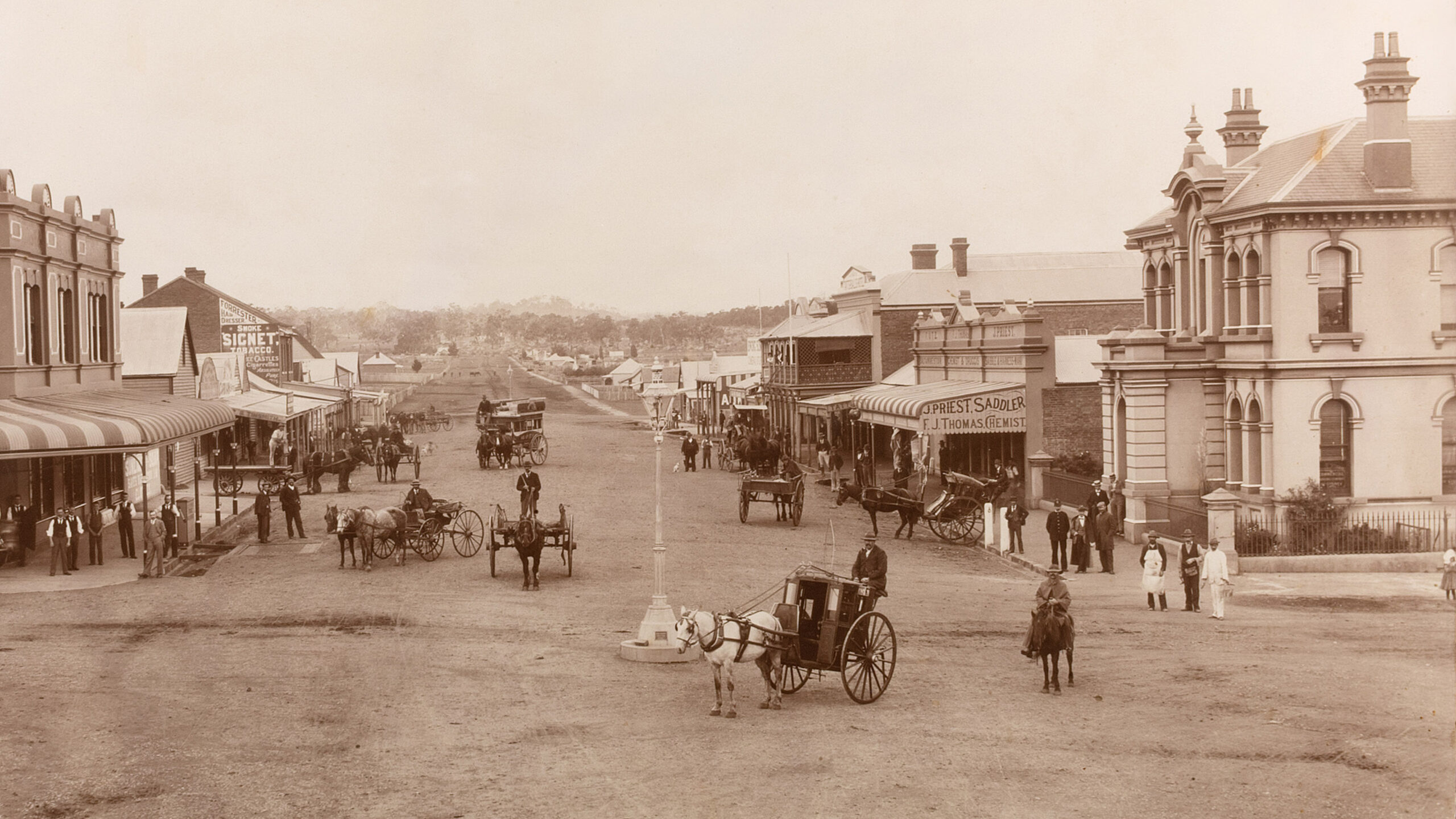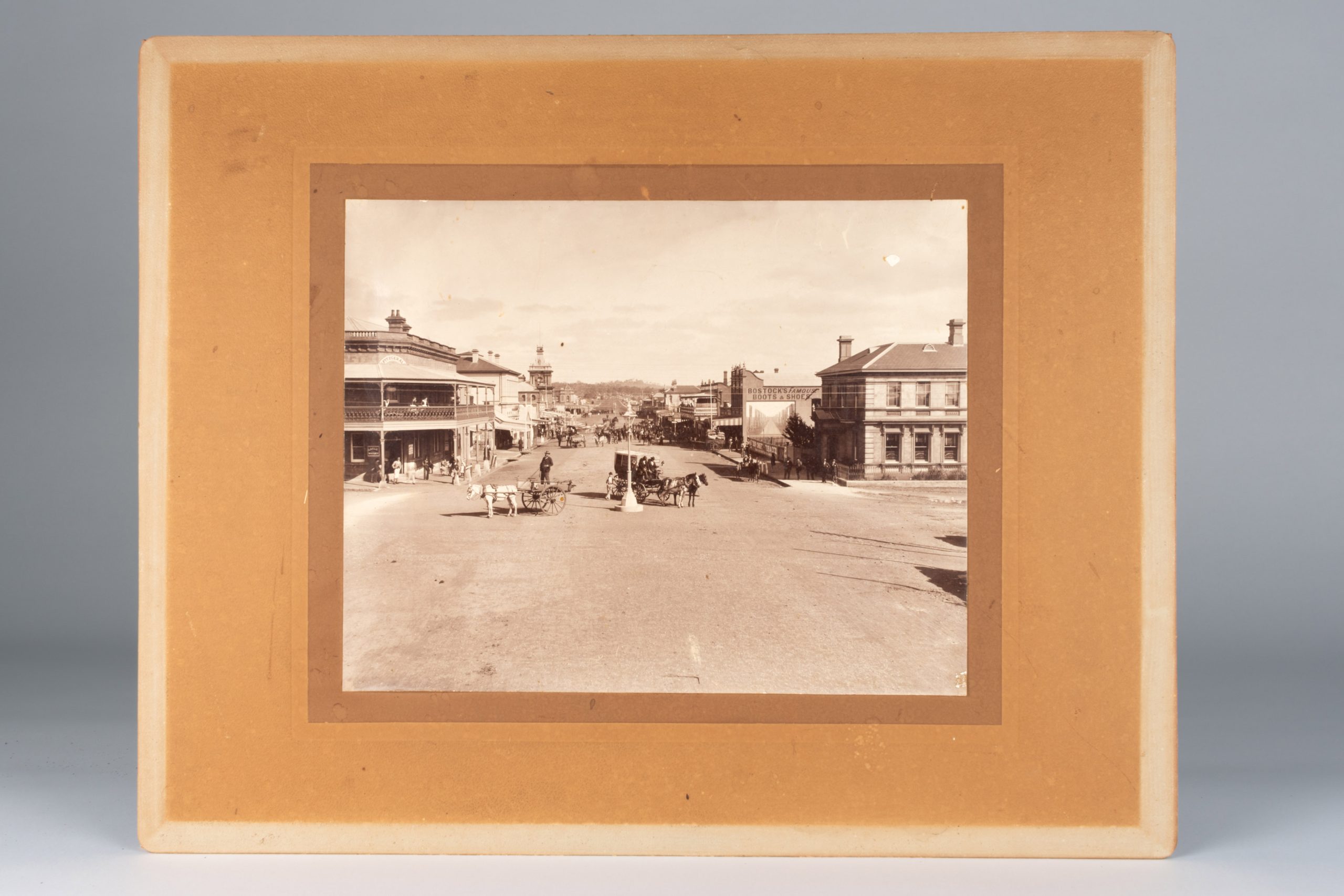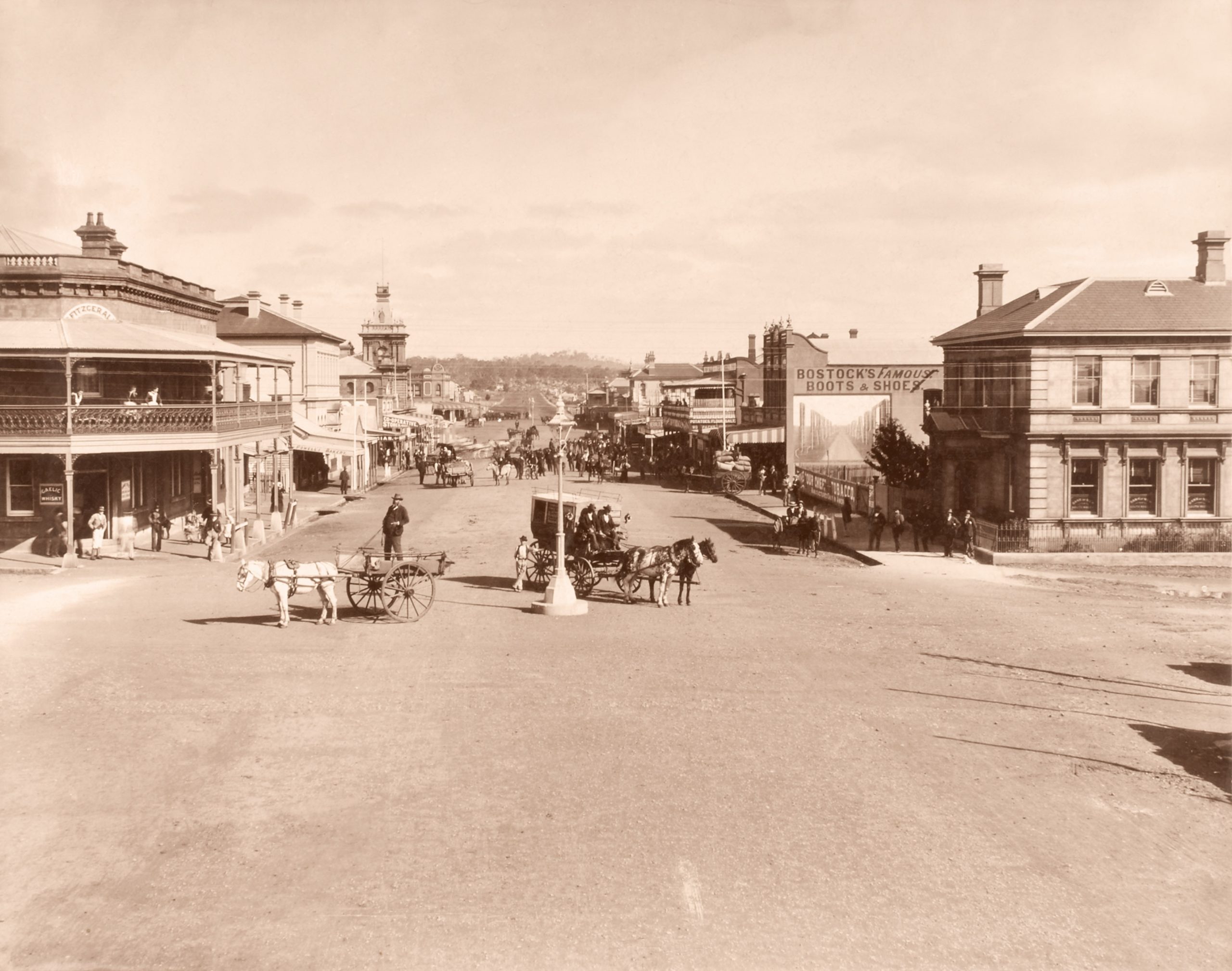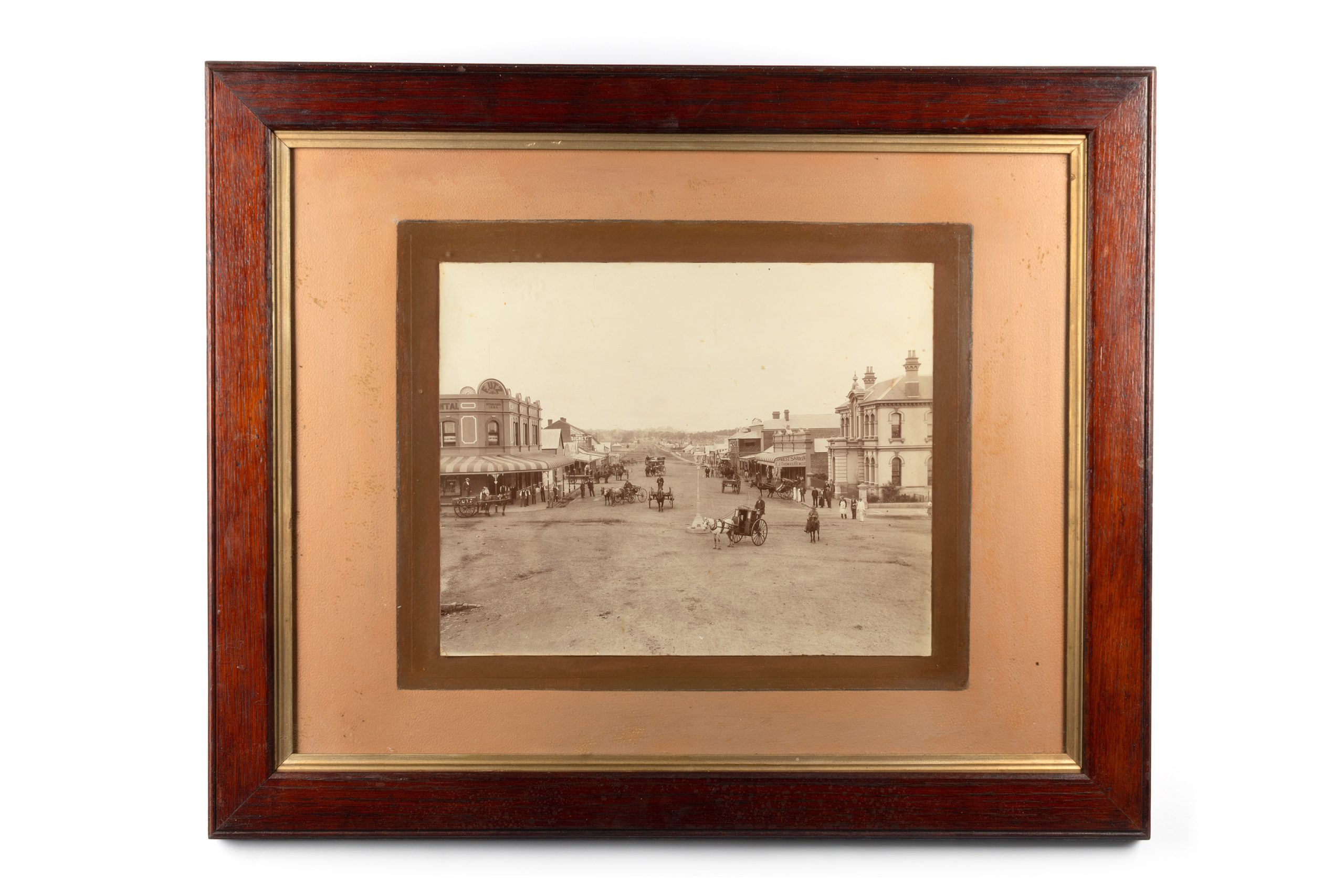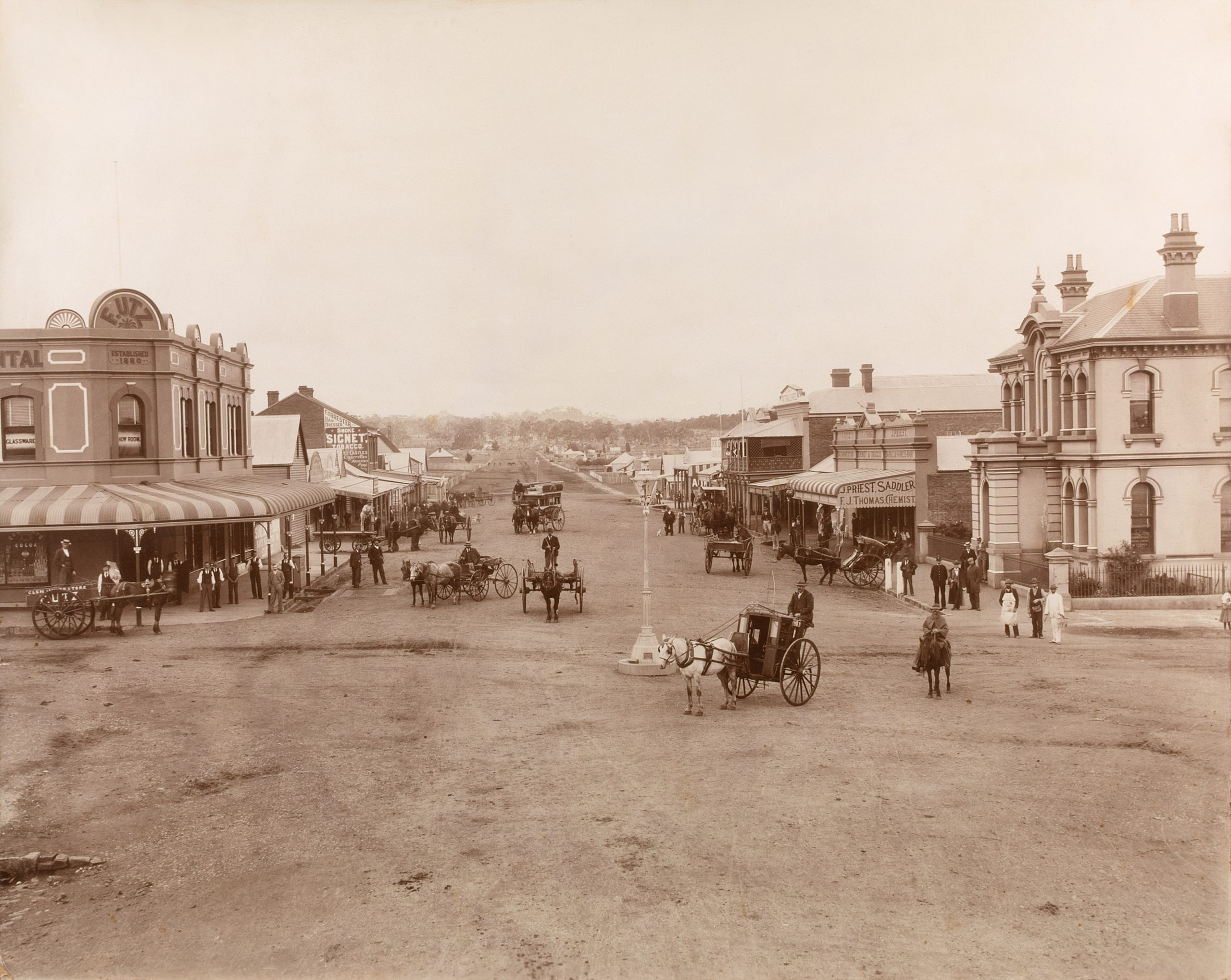Unparalleled Excitement
The Discovery of Tin in Northern NSW
Once a ‘sleepy hollow’, Glen Innes in northern NSW became a ‘scene of unparalleled excitement’ when tin was discovered in the district in the 1870s. There was a huge influx of miners and ‘hotels were thronged with eager and excited visitors from all parts of the world.’
‘Shops of all descriptions sprang into existence.’ As well as the seven stores in the town at the time, there were three churches, five hotels, a courthouse, and public school. The town also boasted two weekly newspapers.
The area was also ‘rich in fine agricultural lands’ suitable for growing wheat, corn, oats, and potatoes. In the 1870s, an estimated 300,000 sheep and 30,000 cattle were also being raised on stations close to town.
These photos were taken about 1900 when Glen Innes was at the height of its prosperity. Taken at the corner of Bourke and Grey Streets, people crowd the pavements and horse-drawn carriages and carts fill the street. In one photo, the Utz general store is in the foreground on the left and J. Priest saddler on the right. The streetlights were fueled with kerosene and lit each night by a lamplighter.
The town was named after the property on which it was built – Glen Innes – a former sheep station owned by Major Archibald Clunes Innes, once a commandant at Port Macquarie Penal Settlement (1826-27). He was one of the wealthiest men in the colony but went bankrupt in the depression in the 1840s. His property was taken over by the Bank of Australasia and later purchased by Archibald Mosman before becoming the site of Glen Innes.
No longer a sleepy hollow, ‘the progress made by the inhabitants has been truly wonderful’ and Glen Innes is ‘destined to become the foremost town in the New England.’


